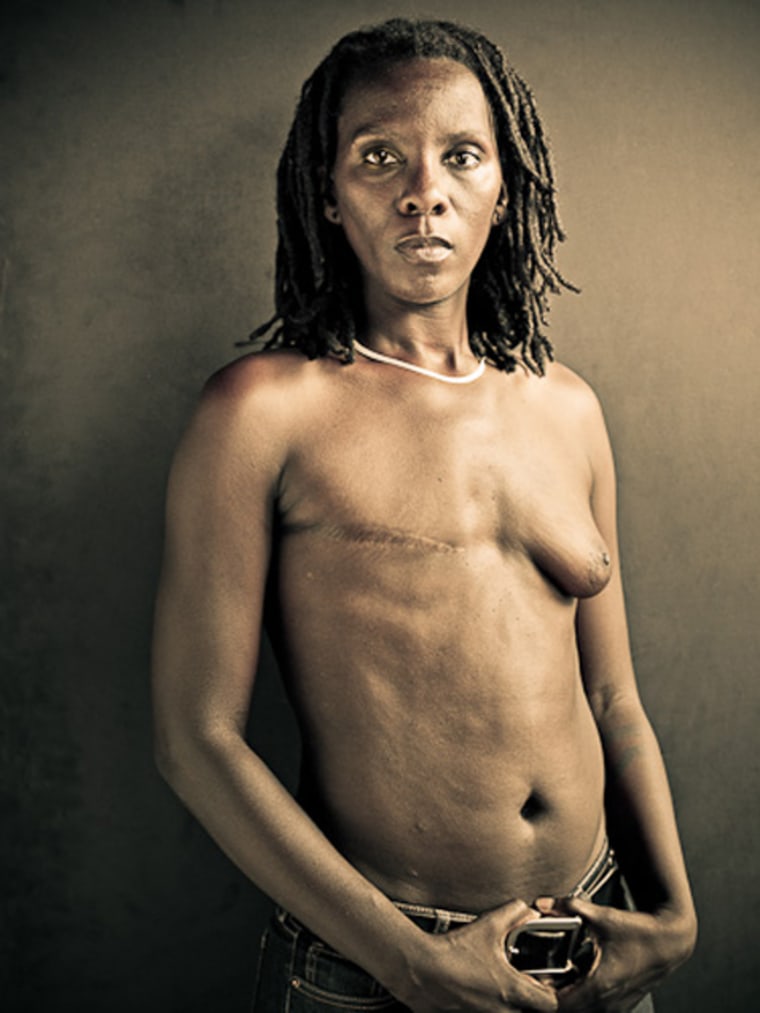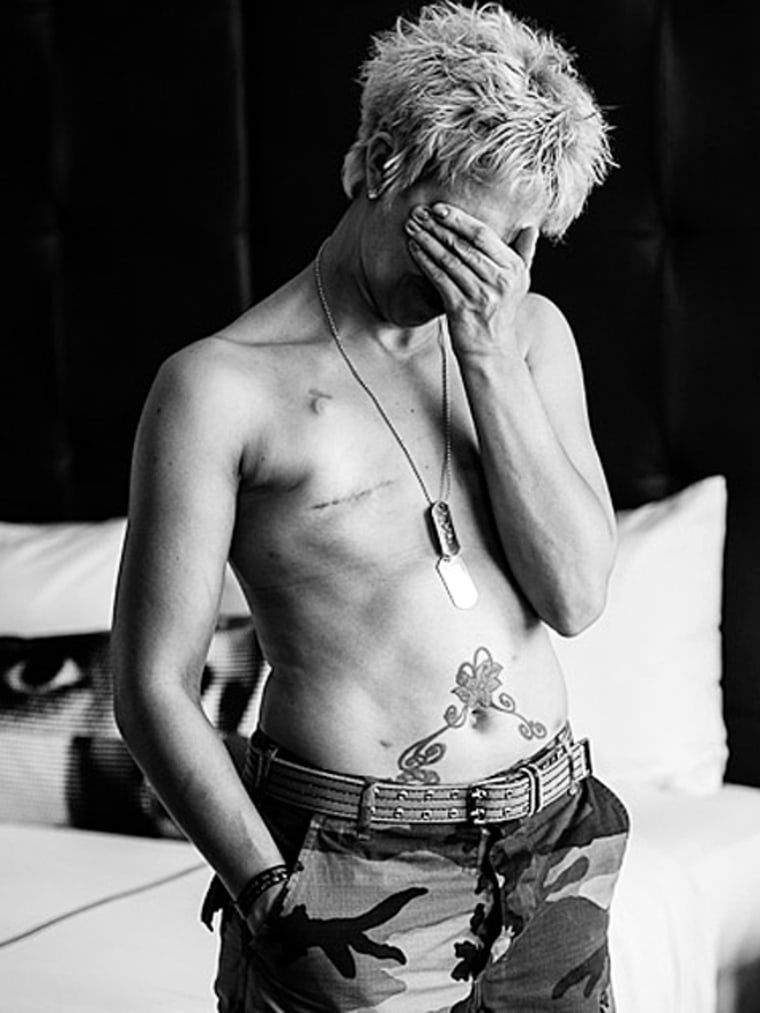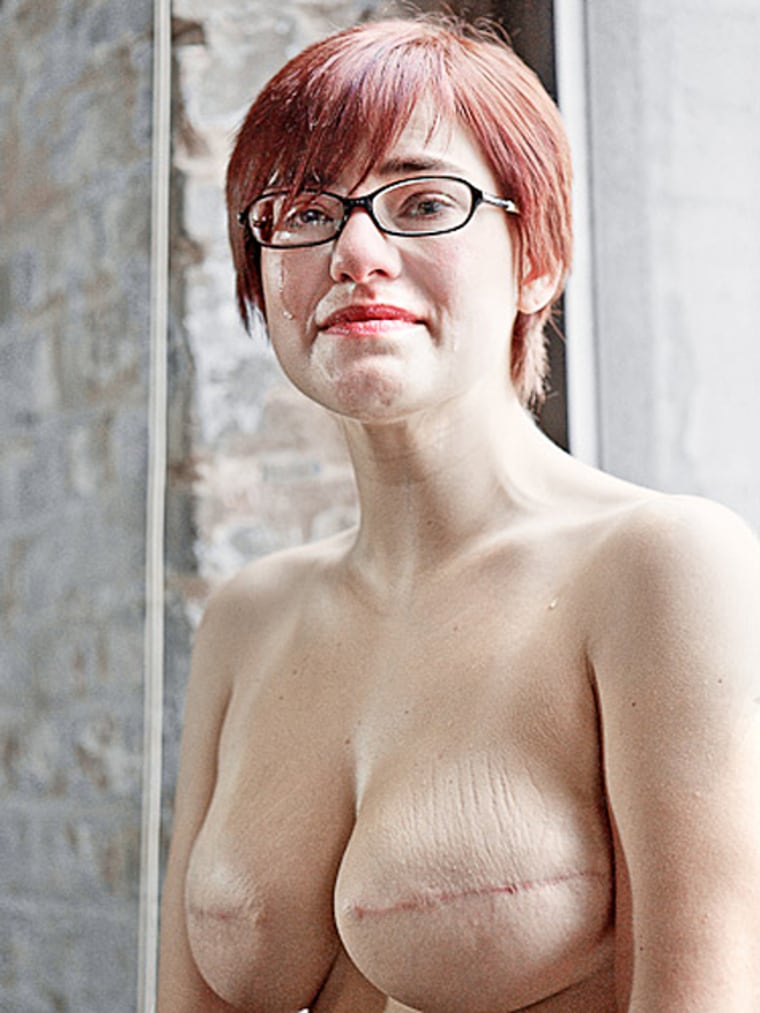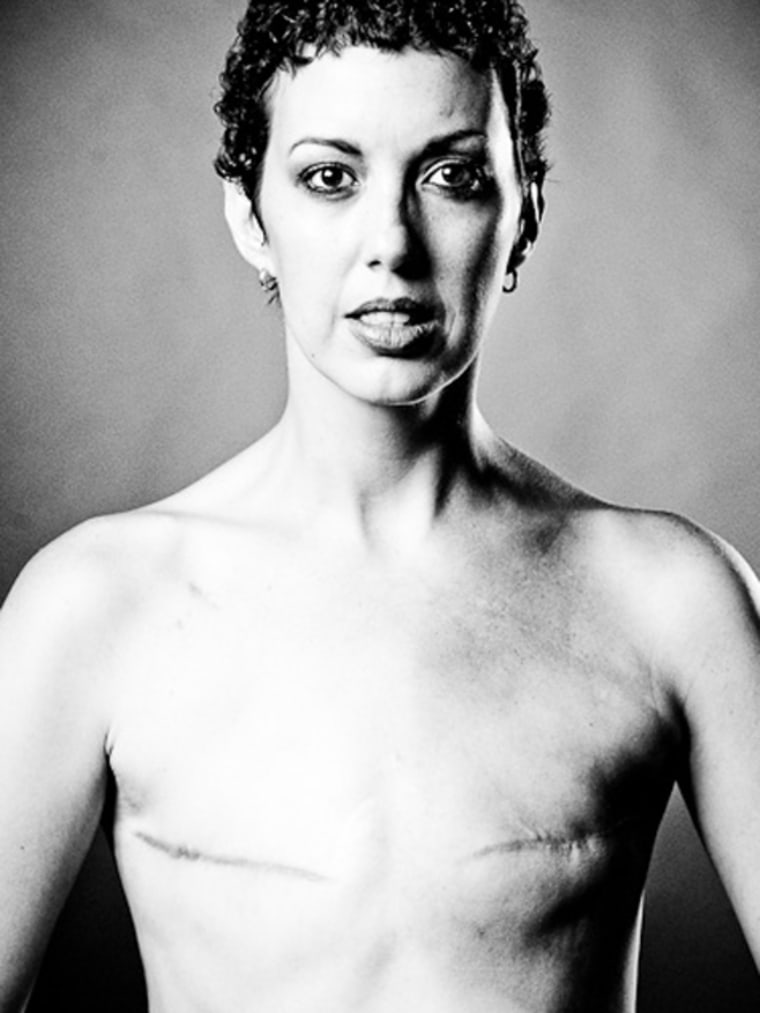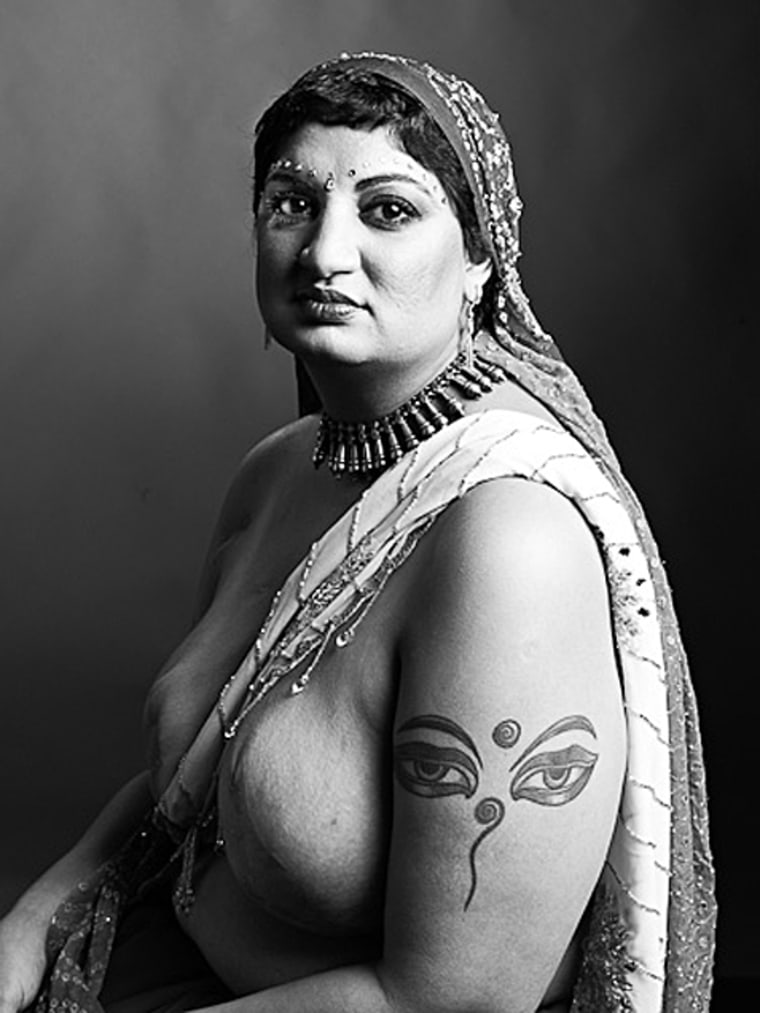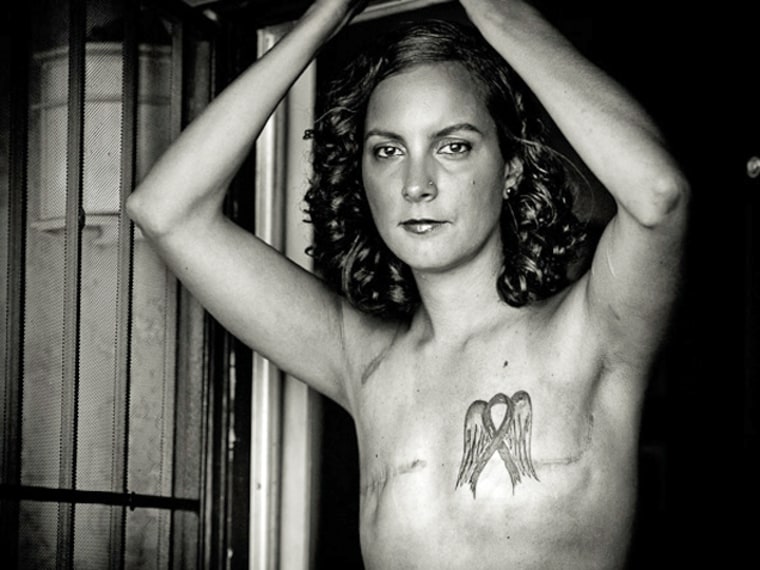Eight years ago, fashion photographer David Jay decided to do something completely different for National Breast Cancer Awareness Month. He didn't want to create another pink product, he wanted to change the way we looked at breast cancer. So he launched The SCAR Project, an unflinching series of semi-nude portraits that revealed the scars of young breast cancer survivors, both physical and emotional. In these women, he captured the reality of what fighting breast cancer can trigger -- courage, fear, acceptance, pride and sadness, to name a few. He also documents the aftermath of the disease -- double mastectomies, lumpectomies, partial or full reconstructions.
Jay says that breast cancer is a frightening prospect. We just cover it up with so many pink ribbons that even survivors have no idea what other women look like after surgery.
iVillage talked with Jay about The SCAR Project in 2010 and we caught up with him again this month to talk about the impact the project has had on him and the women he photographed in the last eight years.
iVillage: What inspired you to take on The SCAR Project?
David Jay: My (then) girlfriend’s identical twin sister got breast cancer when she was 29. I had known both of them since they were 17. We all went to the same yoga school. When Paulina got breast cancer it was just shocking. Here was this healthy, young, strong woman with no family history of the disease. It was completely out of the blue. Two weeks after her diagnosis, she had a mastectomy, and it tore her life up for awhile. Six months later, she came back to yoga. She was wearing a leotard, and there was just one breast. I dragged her into the studio and took this beautifully disturbing black and white of her. It hadn’t crossed my mind that she would get something out of it as well. I’ve since shot almost 100 [women].
iVillage: How did you find the women?
DJ: They all found me. We posted a little note about the project on forums like the Young Survivors Coalition. We said, “Here are some of the pictures, and if you’re interested in participating, shoot me an email,” and that was it. I was immediately inundated by women who wanted to participate. It’s been like a pilgrimage for them. They save up their money to come to New York and be photographed. Often, there are a lot of tears at the shoot. Ultimately, it’s a very satisfying experience for these women. I didn’t get how powerful it is for them.
iVillage: How has this project changed your conception of breast cancer survivors?
DJ: I didn’t even realize you could get breast cancer in your 20s. I was like most people who see it as your mother’s disease. I mean, doctors don’t even recommend women get mammograms until 50 now, right? So not only did I not have any idea, I hadn’t spent any time thinking about it. I don’t know if I ever would have thought about it. I want this to be an awareness-raising campaign for young women.
iVillage: The SCAR Project’s tagline is “breast cancer is not a pink ribbon.” Why did you decide to go that route?
DJ: Tens of thousands of people have seen this project, and I have yet to meet someone who says they know what [breast cancer] looks like. People are so fascinated by it. Breast cancer is hidden behind this absurd pink ribbon; it’s ridiculous. A girl said to me, “If a guy got prostate cancer, do you think someone would give him a pink t-shirt or teddy bear?” It beautifies something that is horrific and dishonest. Many women hate the pink ribbon, because they know the reality of it. They resent the commercializing by people putting a pink ribbon on it.
iVillage: What was it like photographing all of these women? And what was it like for them?
DJ: It was immediately obvious that it was something more than just a picture. For them, it is a moment of acceptance. They know these photographs are going to be out there for the world to see. They think, “What’s happened to me is horrific, and I’m not going to hide. I’m going to show other people what it looks like.” And there’s a bit of pride there as well. Once other women saw the pictures, they wanted to be part of that; they saw the courage and the pride and the pain and beauty -- all the things that I hope are present in the images.
iVillage: When we last spoke to you, you’d just launched a Facebook page. We were amazed that you had 7,000 followers then, but now you have more than 37,000. What has social media done for the project?
DJ: So many women have said the same thing: “I’ve never been able to look in the mirror again, and someone sent me a link to The SCAR Project, and I just want you to know that it’s changed my life and my perception of who I can be.” Or, “I didn’t even know there was anyone else who looks like me.” No one sees it -- not even them. But suddenly, here is this group of women who are just like them. I am so honored that these pictures have a literal impact on these people’s lives.
iVillage: These images are very provoking -- some might even say disturbing. Is that an acceptable way of looking at them?
DJ: There’s no right or wrong way to regard the pictures. Whatever your reaction is your reaction. I’m surprised that people are horrified. I don’t find them horrifying. I know some people can’t even look at them. Whatever you come away with is what you come away with. I can’t control how people perceive them. I only hope that they take something positive away from it.
iVillage: What’s changed since we talked in 2010? How has the project evolved?
DJ: I recently completed two subsets of The SCAR Project. The first featured male breast cancer survivors. The second is The Alabama Project, documentary-style images of young women living with breast cancer in the Deep South with little or no health insurance.
In general, The SCAR Project is photographically complete. I do still add images to The SCAR Project, but these days they tend to be reserved for some of the most unfortunate situations. Although the majority of women I photograph go on to recover (in some form or other), a small percentage do not. Those subjects, I continue to photograph as the disease progresses…until the very end. Their final picture is then added to the exhibition.
iVillage: Will you ever be SCAR Project fatigued?
DJ: Never. I’m not fatigued by seeing suffering. Working on The SCAR Project, whether photographing a subject or the day-to-day logistics of keeping the project afloat, is the greatest gift in my life. However, there are other subjects that I feel compelled to illuminate. I am currently working on my next project, “The Unknown Soldier,” a series of large-scale photographs of young, severely wounded men and women returning home from the wars in Iraq and Afghanistan. In many ways, I view it as The Scar Project 2.0.
There are plans for an exhibition in Toronto and Los Angeles in 2014. You can also purchase The SCAR Project book or documentary on Amazon.com.
Select images from The SCAR Project
Images (c) David Jay/The SCAR Project
